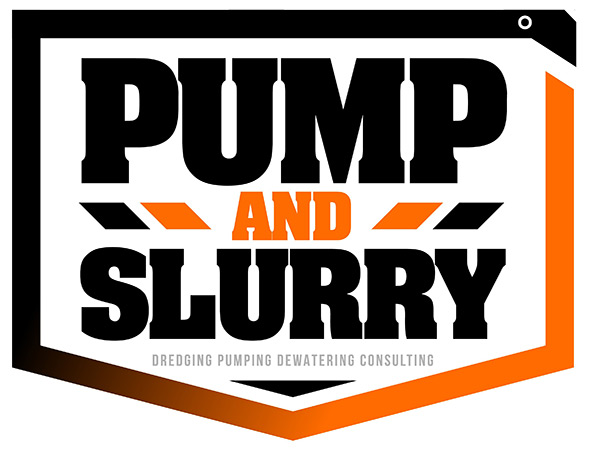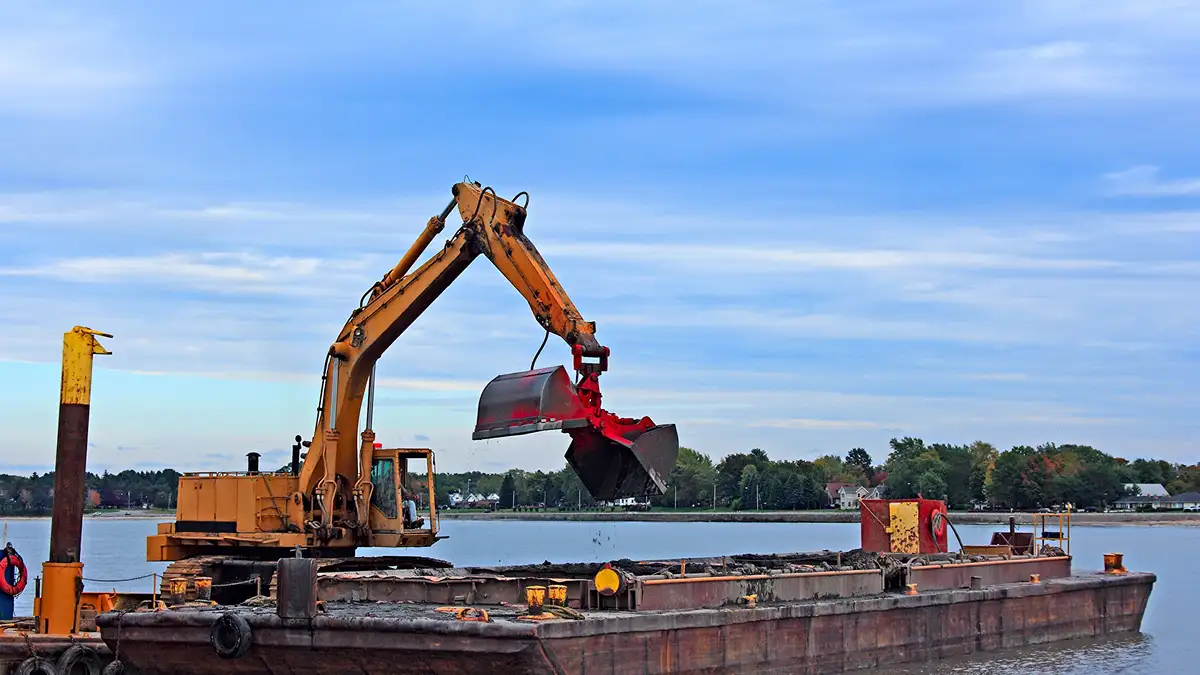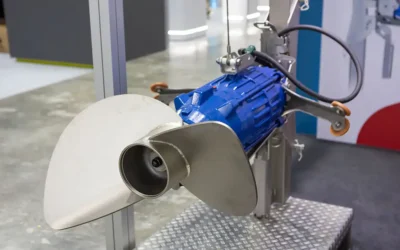In high-stakes marine infrastructure and resource extraction projects, the stability and load distribution of a dredging barge are not just technical details; they are mission-critical parameters that directly influence operational safety, efficiency, and long-term profitability. Whether used in large-scale riverbed excavation, offshore trenching, or municipal waterway maintenance, a dredging barge must be engineered to remain structurally sound and functionally stable under dynamic conditions, including shifting cargo loads, crane lifts, and wave activity.
Failure to properly address stability and load distribution in the design or retrofitting of a dredge barge can result in significant and sometimes catastrophic consequences. These include equipment failure, unplanned downtime, compromised worker safety, and even total capsizing. For procurement heads and project contractors, such failures translate to missed deadlines, increased insurance liabilities, and erosion of return on investment (ROI). From an operational perspective, poor load management can hinder unloading sequences, reduce payload efficiency, and cause structural fatigue, compromising both the barge and the broader dredging operation.
This article outlines the key stability and load distribution principles specific to dredger barge design and usage. It is tailored to decision-makers across mining, oil and gas, military, and municipal sectors who are responsible for evaluating, procuring, or managing these assets. By understanding the real-world implications of barge stability and integrating best practices into both design and deployment, stakeholders can enhance safety, reduce lifecycle costs, and ensure uninterrupted dredging performance.
What Is a Dredging Barge and Why Stability Matters
Understanding the Dredging Barge, Dredge Barge, and Dredger Barge
A dredging barge, also referred to as a dredge barge or dredger barge, is a flat-deck, floating platform specifically engineered to support dredging operations in marine, riverine, and industrial environments. These barges are equipped to carry heavy machinery such as crane systems, hydraulic pumps, or suction dredgers used to remove sediment, slurry, and other materials from water bodies. They serve as the operational foundation for excavation, transport, and discharge processes vital to a wide range of heavy industries.
Unlike general-purpose barges, a dredging barge must be designed with precise stability and load management considerations. The equipment onboard often generates variable and asymmetrical loads, making the platform’s structural integrity and buoyant balance critical to safe and efficient operations.
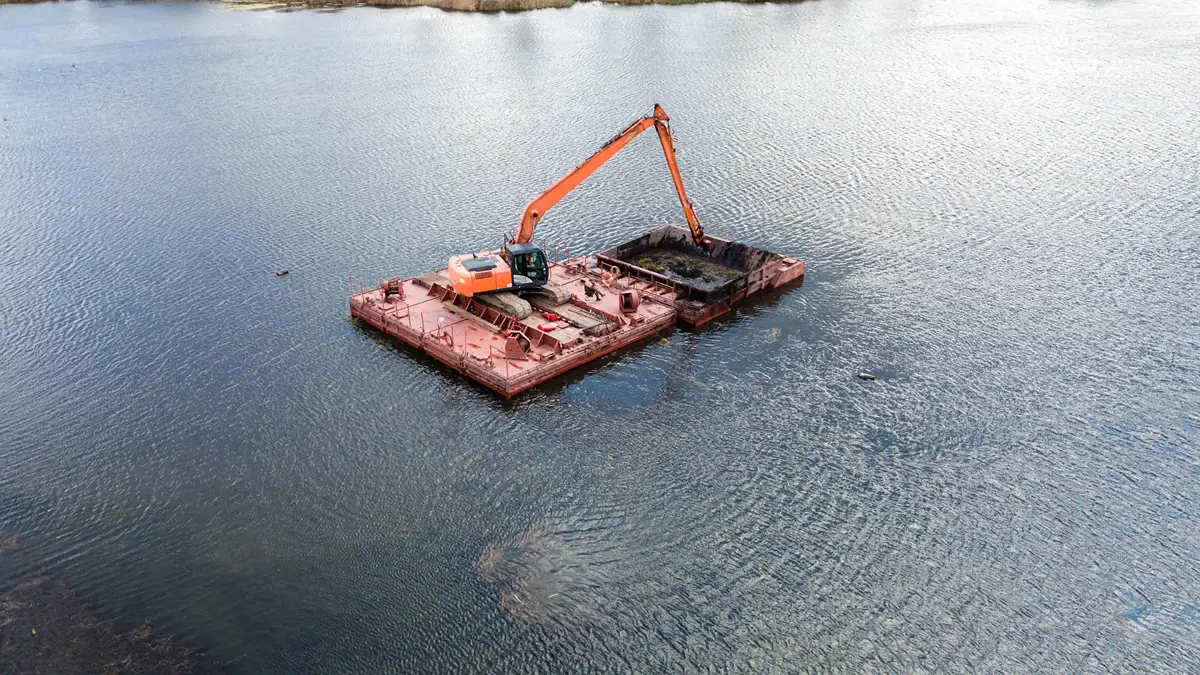
Operational Roles Across Industries
The use of dredge barges spans a diverse set of sectors:
- Mining: Tailings pond reclamation, slurry removal, and underwater excavation
- Oil & Gas: Pipeline trenching, offshore platform maintenance, and seabed leveling
- Municipal and Infrastructure Projects: Harbor deepening, levee restoration, bridge foundation clearing, and naval base maintenance
In each case, the dredger barge serves not only as a transport mechanism but also as a heavy-duty work platform subjected to dynamic forces such as wave motion, load shifts, and mechanical vibration. As operations become more mechanized and throughput-focused, maintaining barge stability becomes increasingly critical.
Impact on Project Performance, Logistics, and Risk
The stability of a dredging barge directly influences several core dimensions of project success:
- Operational Safety: Improper load distribution or insufficient metacentric height can lead to listing, structural stress, or even capsizing, endangering personnel and equipment.
- Project Continuity: Downtime caused by barge instability or equipment misalignment often results in schedule delays, contractual penalties, and increased logistical complexity.
- Regulatory Compliance: Many projects operate under environmental and safety regulations that require documented stability assessments. Failure to meet these criteria can lead to shutdowns or fines.
- ROI and Cost Control: A stable, well-balanced dredge barge enables smoother operations, reduces wear on equipment, and supports more predictable material handling—ultimately contributing to lower lifecycle costs.
For procurement teams, engineering consultants, and project managers, choosing a dredger barge with a proven stability profile is not a technical luxury—it is a financial and operational necessity.
Stability Explained: From Basics to Industry Benchmarks
Core Principles of Barge Stability
Stability in a dredging barge refers to the vessel’s ability to remain upright and recover from external forces such as shifting loads, crane operations, or wave impact. A stable platform ensures that onboard dredging equipment functions effectively and safely during prolonged, often high-capacity operations. In practical terms, stability influences whether a dredge barge can perform efficiently without risk of capsizing, structural damage, or work stoppages.
There are three key categories of barge stability:
- Initial Stability: The barge’s resistance to small degrees of tilt or heel. This is typically quantified by the metacentric height (GM). For dredging operations, a GM value of at least 0.35 meters is generally considered safe.
- Static Stability: The vessel’s ability to resist heeling under a constant force. This is assessed by the righting lever (GZ), which should remain positive through a range of heel angles, ideally up to 35 degrees.
- Dynamic Stability: The barge’s capacity to recover from large rolling movements. It is represented by the area under the GZ curve and reflects how the barge behaves under continuous external forces like wind or wake.
For operators of a dredger barge, understanding these parameters is essential for load planning, crane positioning, and equipment installation.
Key Metrics: GM, GZ, and KG Explained
Several technical measurements determine a dredging barge’s overall stability performance:
- Metacentric Height (GM)
This is the vertical distance between the center of gravity (G) and the metacenter (M). A higher GM generally indicates better initial stability. A GM value below recommended levels may cause the barge to roll excessively, risking damage to dredging systems and reducing crew safety. - Righting Lever (GZ)
The GZ value indicates how much righting force is generated as the barge heels. A larger GZ results in a stronger corrective force, which is particularly important when using cranes or handling bulk material on a dredge barge. - Vertical Center of Gravity (KG)
This is the distance from the keel (K) to the center of gravity (G) of the combined barge and its load. As equipment is added or removed from a dredger barge, the KG shifts, which directly affects GM and GZ values.
Why Benchmarks Matter in Real Operations
Failing to meet established benchmarks can lead to compromised performance. Inconsistent GM or unmonitored KG changes may render a dredging barge unfit for its intended work environment, resulting in equipment instability or even structural damage.
For example, in offshore mining applications where slurry pumps exert continuous force, a dredge barge must have dynamic stability capable of resisting cyclic loading. Likewise, for a dredger barge used in municipal dredging near populated harbors, predictable GZ values ensure compliance with safety regulations and minimize operational disruptions due to shifting tides or vessel wakes.
Engineering teams, vessel operators, and procurement professionals should all verify that barge specifications align with their project’s operational profiles. Benchmarks are not just compliance requirements; they are indicators of a vessel’s real-world fitness for purpose.
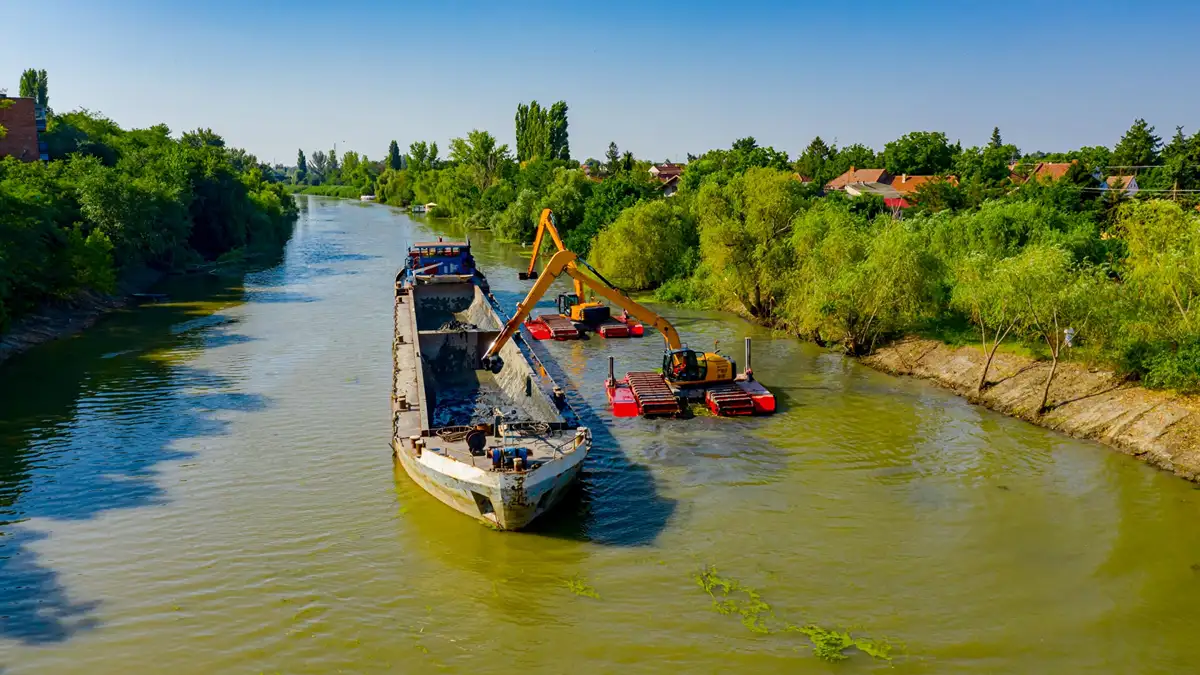
Load Distribution: Avoiding Failures Through Smart Design
Why Load Distribution Matters in Dredging Barge Operations
Proper load distribution is a fundamental design requirement for any dredging barge, directly influencing its operational stability, deck integrity, and overall performance. In dredging environments, where materials such as slurry, sediment, rock, or tailings are handled, loads are dynamic, heavy, and often unevenly applied. Without a balanced distribution of weight across the hull, even a structurally sound dredge barge can experience dangerous stress concentrations, reduced stability margins, and costly operational disruptions.
Unlike conventional barges used for cargo transport, a dredger barge is typically outfitted with heavy machinery, hoppers, pipelines, cranes, and rotating equipment that create asymmetrical load profiles. These components may shift or vibrate during dredging cycles, which means the barge’s structural balance must be designed and maintained with extreme care.
How Load Placement Affects Barge Stability
Weight distribution on a dredging barge affects several critical factors:
- Trim and Heel Behavior: Uneven loading causes the barge to pitch (trim) or tilt laterally (heel), reducing operational safety and creating unstable work conditions.
- Shifting Center of Gravity (KG): As cargo or equipment is loaded or repositioned, the vertical center of gravity shifts. This, in turn, alters the barge’s metacentric height (GM) and overall stability.
- Crane and Lifting Forces: When mounted equipment performs lateral or vertical lifts, additional heeling moments are introduced. Poor weight distribution can quickly lead to unsafe conditions if the dredge barge is not engineered to compensate.
Calculating GM and Evaluating Load Plans
To ensure that a dredger barge maintains adequate stability under working conditions, engineers calculate the metacentric height (GM) using the formula:
GM = KB + BM – KG
Where:
- KB is the height of the center of buoyancy from the keel.
- BM is the transverse metacentric radius (dependent on hull shape)
- KG is the vertical center of gravity of the fully loaded barg.e
Every new load configuration, whether due to equipment changes or differing material densities, must be reassessed using this equation. For instance, a dredging barge transitioning from a cutter suction dredging system to a crane-mounted configuration will experience a higher KG and require rebalancing to preserve its GM margin.
Engineering teams should also develop limiting KG curves for each barge model. These charts show the maximum allowable center of gravity height at varying displacements. They serve as a crucial decision-making tool for procurement and safety teams evaluating whether a dredge barge configuration is viable for a given application.
In one documented offshore case, a dredging barge outfitted with side-mounted discharge equipment developed a persistent 5° list due to improper ballast adjustments, delaying dredging progress by over two weeks and requiring mid-project retrofitting.
Such setbacks highlight the importance of front-end planning, real-time monitoring, and post-modification verification for any dredger barge used in demanding environments.
Design Implications for Project Teams
For procurement leads and engineering managers, it is essential to select or specify a dredging barge with:
- Load-rated deck surfaces based on your heaviest equipment
- Verified GM and KG calculations for planned cargo or machinery
- Modularity or reinforcement options for adapting to future equipment changes
- Access to load distribution documentation, simulations, or certification
Even minor imbalances can scale into major liabilities in high-volume dredging operations. Smart design and proactive engineering reviews help ensure that your dredge barge remains a stable, safe, and profitable asset over its full service life.
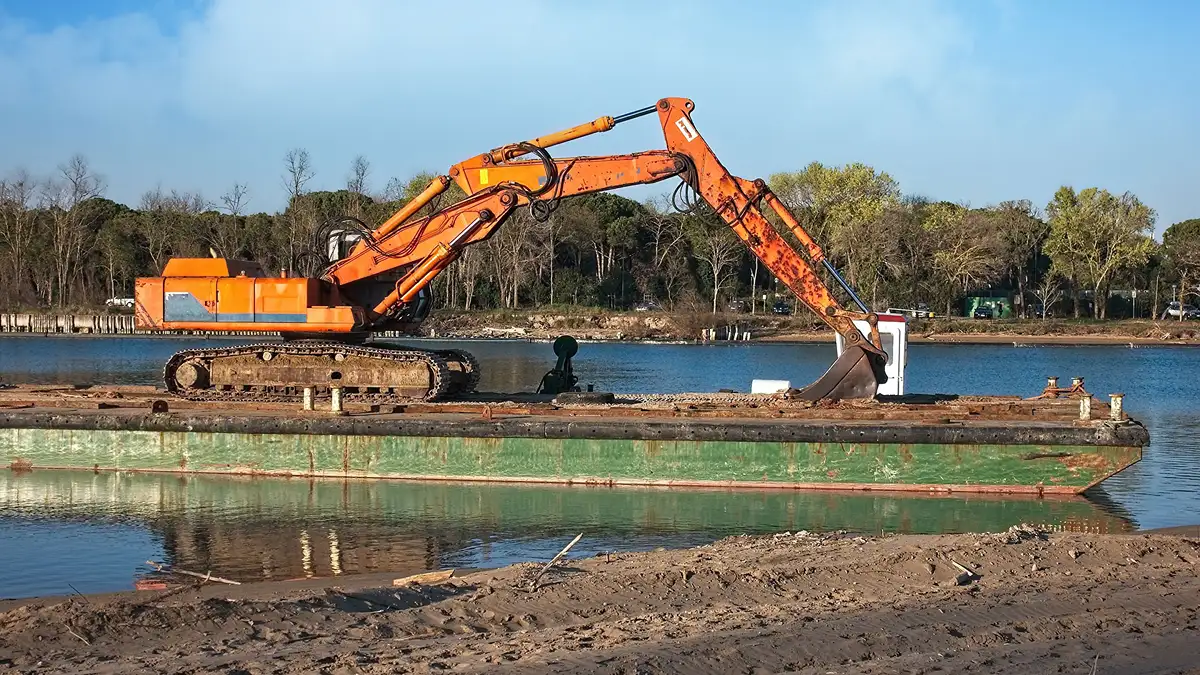
Risk Factors in Dredging Operations
Operational and Environmental Risks Facing Dredging Barges
Every dredging barge operates in a high-risk environment where a mix of natural forces, mechanical variables, and human factors converge. Whether deployed in open coastal waters, river systems, or industrial tailings ponds, a dredge barge is subject to continuous external and internal stresses. These forces can compromise stability, shift load distribution, or induce structural failures, particularly if not anticipated in the design or daily operation of the barge.
Unlike conventional marine vessels, a dredger barge often operates in a fixed or semi-fixed position while carrying out heavy-duty excavation and pumping tasks. This makes it uniquely vulnerable to imbalanced forces and localized overloads. The consequences of these risks are not merely technical—they impact worker safety, environmental compliance, operational continuity, and overall profitability.
Free-Surface Effect and Liquid Load Hazards
One of the most significant, and frequently overlooked, threats to dredging barge stability is the free-surface effect. This occurs when liquids in onboard tanks or hoppers shift laterally during vessel movement. Even small waves or equipment vibrations can cause the liquid’s center of gravity to shift, reducing the effective metacentric height (GM) and making the barge more prone to rolling or capsizing.
In dredging operations, this is especially critical. A dredge barge often carries slurry, water-laden sediment, or process water in large onboard tanks. If these are not properly baffled or emptied in a controlled sequence, they can severely compromise the vessel’s righting ability.
Engineering teams must factor in free-surface effect calculations during design and confirm mitigation strategies such as:
- Segmented tanks with internal baffles
- Controlled filling and emptying protocols
- Active ballast systems that counteract liquid movement
Environmental Forces: Wind, Wave, and Current Loads
Environmental conditions also pose major risks to dredger barge operations. Barges positioned offshore or in flowing rivers must contend with wave-induced roll, wind pressure, and tidal current forces, all of which apply lateral and vertical stresses to the platform.
Key risk considerations include:
- Wind heel: Large equipment or superstructures on a dredging barge create windage, potentially inducing a heeling moment if winds are sustained and unidirectional.
- Wave resonance: When a barge’s natural frequencies align with wave intervals, rolling and pitching motions become amplified.
- Current-induced drag: In river-based projects, current can push against moored dredge barges, increasing line tension and requiring dynamic positioning or anchor adjustments.
Site surveys and mooring system design are essential to manage these risks. Engineering teams should simulate the barge’s hydrodynamic behavior under local conditions before deployment.
Shifting Cargo and Onboard Operations
Dynamic operations such as crane lifts, pump surges, and conveyor movement can shift cargo unevenly across the deck or alter the vessel’s center of gravity (KG). On a dredger barge, this is particularly dangerous when operating close to stability limits, such as during partial unloading or offshore lifting.
Common onboard risk scenarios include:
- Uneven material loading into hoppers during active dredging
- Crane lifts without real-time stability monitoring
- Deck movement of mobile equipment or improperly secured components
- Unplanned crew movement or storage rearrangement that subtly affects trim
Even small shifts in weight can cascade into a destabilized barge when compounded by environmental motion. Operators must follow rigorous load and equipment plans, with real-time monitoring and alarms where possible.
Proactive Mitigation for Safer Operations
Project stakeholders can minimize risk by implementing these control strategies:
- Conduct pre-mobilization risk assessments for all dredging barges
- Verify and update limiting KG curves for the current loadout.
- Use motion-compensated or dynamically positioned equipment.
- Monitor weather, tide, and cargo conditions in real time.
- Train onboard teams in emergency stability response.
By proactively managing these risk factors, engineering managers, procurement leads, and operations personnel can significantly improve the safety and reliability of their dredger barge operations, preserving both human life and project profitability.
Design and Procurement Checklist
Key Items for Engineering and Procurement Teams
Selecting or specifying a dredging barge is a high-impact decision that directly affects safety, operational efficiency, and ROI. To ensure a dredge barge is fit for purpose, engineering and procurement teams must go beyond basic specifications and assess detailed performance metrics, structural tolerances, and compatibility with the intended work environment.
Below are the essential items every technical review and procurement process should include:
- Stability Modeling and Inclining Test Records
Request recent inclining experiment results and computer-based stability analyses for the exact configuration of the dredger barge. These documents confirm the vessel’s center of gravity (KG), metacentric height (GM), and righting lever (GZ) performance under both light and fully loaded conditions. - Verified Limiting KG Curves and Maximum Load Thresholds
A qualified dredging barge should come with validated limiting KG curves that define the maximum allowable center of gravity at different displacements. This ensures safe operation across varying load profiles and provides a reference for ongoing weight management and ballast adjustments. - Equipment Compatibility with Unloading Methods
Confirm that the barge’s structural layout, stability margins, and deck reinforcements are compatible with the planned unloading system, whether mechanical (cranes, conveyors) or hydraulic (slurry pumps). Mismatches between barge design and offloading equipment can reduce efficiency and increase structural risk.
A well-informed procurement decision starts with verifying that these technical benchmarks are met and supported by credible documentation from the builder, naval architect, or third-party certification body.
Questions Decision-Makers Should Ask
Procurement heads, project contractors, and government buyers evaluating a dredge barge should challenge vendors and engineering partners with high-precision, operationally relevant questions. Here are three non-negotiables:
- “Has the barge been simulated for my load profile?”
Simulations should reflect the actual equipment, cargo, and environmental conditions expected in your operation. A generic model isn’t enough—request scenario-specific reports to verify suitability. - “What is the GM margin under full operational load?”
Knowing the metacentric height when fully loaded gives insight into the barge’s roll resistance and safety buffer. It also affects crane lifting capacity and pump system performance on a dredging barge. - “Is free-surface effect mitigated by tank design?”
Ask whether onboard tanks include baffles or compartments to reduce free-surface instability. If not, confirm whether alternative ballast or operational procedures are in place to address the risk.
Asking these questions early in the procurement process ensures that the selected dredger barge will not only meet technical specs but also perform reliably under real-world conditions, protecting both your investment and your project timeline.
The Strategic Value of Stability in Dredging Barge Operations
The performance and safety of any dredging barge depend on how well its stability and load distribution have been engineered and managed. Whether the vessel is outfitted for slurry pumping, sediment excavation, or heavy crane lifts, understanding how weight, movement, and environmental factors interact is critical to long-term operational success. As industries such as mining, oil and gas, and municipal infrastructure push for higher efficiency and uptime, the margin for error in dredge barge design continues to narrow. A stable, well-balanced barge is not just a safety requirement; it’s a financial and functional asset that directly contributes to project outcomes.
For decision-makers, this means choosing a dredger barge is not just about tonnage capacity or deck space. It’s about verifying engineering data, matching capabilities to application, and ensuring risk factors like free-surface effect and load shift are fully accounted for. By applying the stability benchmarks, procurement checklists, and operational safeguards outlined in this guide, teams can deploy barges that are built to perform, compliant by design, and positioned to deliver maximum ROI across every dredging application.
Ready to specify or source a high-performance dredging barge? Contact our technical team to discuss custom-engineered solutions that meet your project’s exact stability and load requirements.




